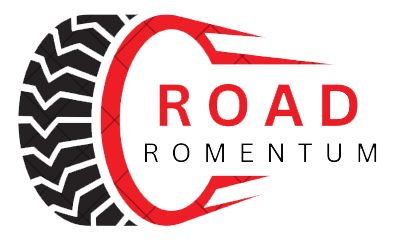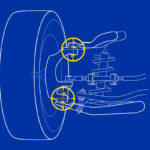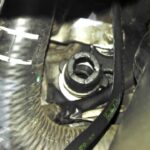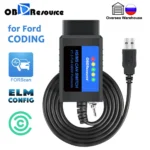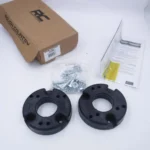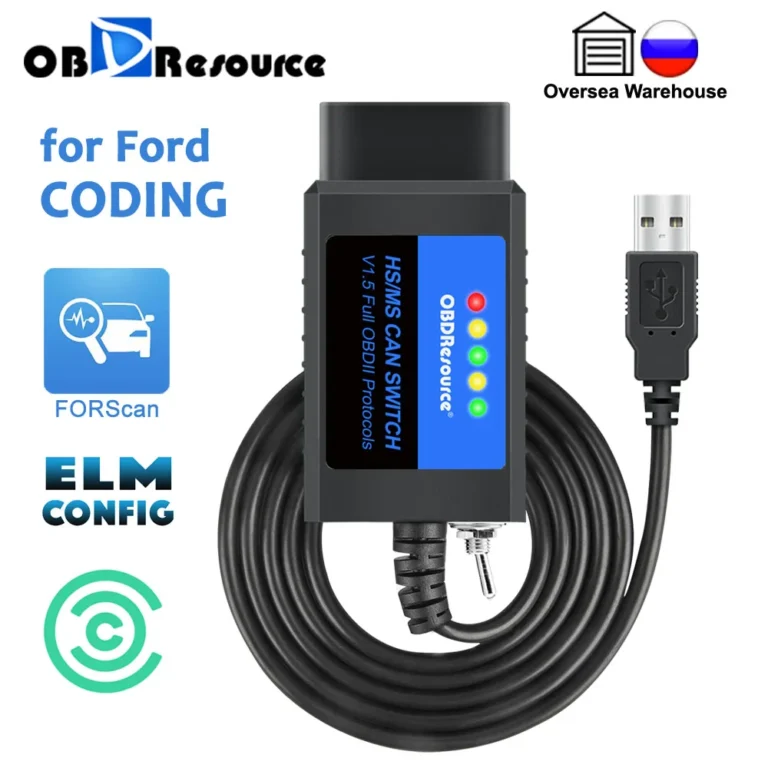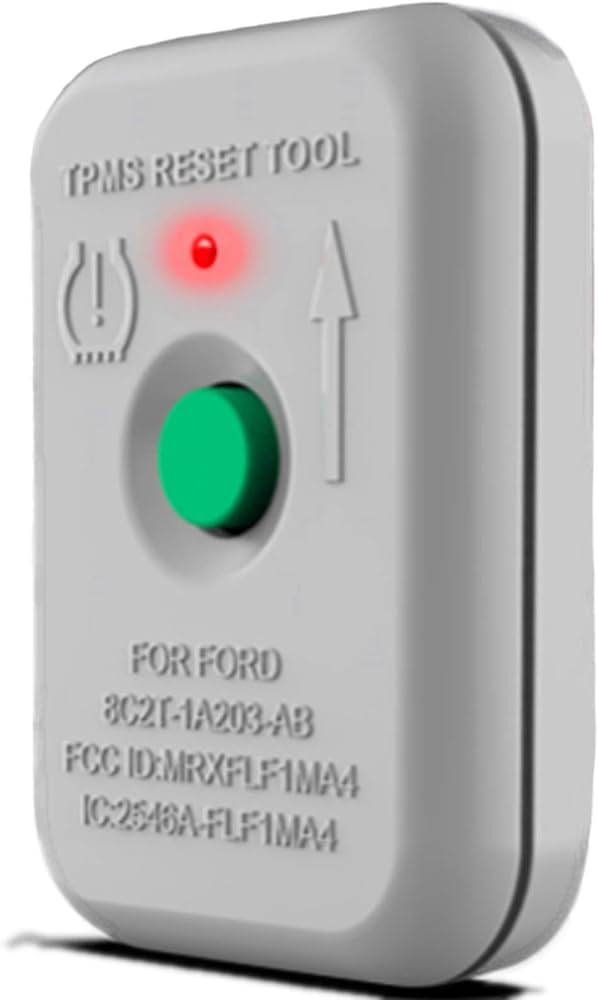What is an IWE on a Ford F150? Unveiling the Power Behind the Integrated Wheel Ends
An IWE on a Ford F150 stands for Integrated Wheel End. It is a system that uses vacuum supplied from the engine to engage or disengage the hubs on the front wheels of the vehicle.
What Is An Iwe On A Ford F150?
An IWE on a Ford F150 stands for Integrated Wheel End. It is a system that uses vacuum supplied from the engine to disengage the hubs, allowing the front wheels to rotate freely. This system helps improve fuel efficiency and reduces wear on the drivetrain.
What is an IWE on a Ford F150?Definition Of Iwe
The IWE, or Integrated Wheel End, is an important component of the Ford F150’s drivetrain system. It is responsible for controlling the engagement and disengagement of the front hubs, allowing the wheels to either rotate freely or be connected to the axle. This system is commonly found in modern four-wheel drive vehicles and is designed to improve fuel efficiency and reduce wear and tear on the drivetrain components.Role Of Iwe In The Ford F150
The IWE plays a crucial role in the overall performance of the Ford F150. Its primary function is to select the appropriate mode for the front hubs based on the driving conditions. When the vehicle is in two-wheel drive mode, the IWE ensures that the front hubs are disengaged, allowing them to rotate freely without adding unnecessary drag to the drivetrain. This helps to improve fuel efficiency and reduce wear on the front axle components. On the other hand, when the vehicle is in four-wheel drive mode, the IWE engages the front hubs, allowing them to lock onto the axle and transmit power to the front wheels. This enhances traction and improves the vehicle’s off-road capabilities, providing better control and stability in challenging terrains.How The Iwe System Works
The IWE system on the Ford F150 operates using a vacuum system, which is controlled by a solenoid valve. When the vehicle is in two-wheel drive mode, the solenoid valve opens, allowing vacuum pressure from the engine to be directed to the IWE actuators. This vacuum pressure keeps the IWE actuators in the disengaged position, ensuring that the front hubs are unlocked and able to rotate freely. When the vehicle is switched to four-wheel drive mode, the solenoid valve closes, cutting off the vacuum pressure to the IWE actuators. This causes the actuators to release the vacuum, which allows engagement of the front hubs with the axle. As a result, power is transmitted to the front wheels, enabling the vehicle to drive in four-wheel drive mode. In summary, the IWE system on the Ford F150 is responsible for controlling the engagement and disengagement of the front hubs. It plays a vital role in enhancing the vehicle’s fuel efficiency, drivetrain performance, and off-road capabilities. Understanding how the IWE system works can help drivers troubleshoot and maintain their Ford F150 effectively.Unveiling The Power Behind The Integrated Wheel Ends
Unveiling the Power Behind the Integrated Wheel Ends
Benefits Of Using Oe-quality Hub Units
When it comes to the Integrated Wheel Ends (IWE) on a Ford F150, using OE-quality hub units brings numerous benefits. Let’s take a closer look at why upgrading to these high-quality components is a wise choice:
- Reliable Performance: OE-quality hub units are designed and manufactured to meet stringent standards, ensuring reliable performance.
- Durability: These hub units are built to withstand the demanding conditions of off-road driving, providing exceptional durability.
- Exact Fit: OE-quality hub units are engineered to fit seamlessly into the Ford F150, ensuring a perfect match and easy installation.
- Longevity: Investing in OE-quality hub units means you can expect them to last longer, saving you money in the long run.
- Enhanced Safety: By using OE-quality hub units, you can have peace of mind knowing that your vehicle’s wheel ends are operating at their optimal level, ensuring your safety on and off the road.
Common Problems With Iwe On Ford F150
While the Integrated Wheel Ends (IWE) system is designed to improve the performance and reliability of the Ford F150, it can still experience some common issues. Here are a few problems that owners may encounter:
- Engagement Failure: One of the most common problems is the failure of the hubs to engage or disengage properly, resulting in a loss of 4×4 functionality.
- Vacuum Leaks: Vacuum leaks can occur within the IWE system, causing poor engagement or disengagement of the hubs.
- Actuator Failure: The actuators responsible for controlling the hub engagement may fail, leading to improper operation of the IWE system.
- Dirt and Debris Accumulation: The IWE system can get clogged with dirt and debris, hindering proper functionality.
- Vacuum Solenoid Issues: Problems with the vacuum solenoid can also affect the performance of the IWE system.
Signs Of A Malfunctioning Vacuum Solenoid
Identifying a malfunctioning vacuum solenoid is crucial for maintaining the optimal performance of the IWE system. Look out for the following signs that indicate a problem:
- Insufficient power
- Turbo lag (on turbocharged vehicles)
- Black smoke
- Hesitation
- Vehicle in Limp Home Mode
If you notice any of these symptoms, it is recommended to have the vacuum solenoid checked and replaced if necessary.
When Did Ford Start Using Iwe?
The IWE, or Integrated Wheel Ends, on a Ford F150 is a system that allows the front wheels to rotate. Ford started using IWEs in their vehicles starting from a specific year, but the exact year may vary.
Introduction Of Iwe In Ford Vehicles
Integrated Wheel Ends (IWE) is a key feature in Ford vehicles that enhances their performance and off-road capability. This innovative system allows for the automatic engagement and disengagement of the front wheel hubs, depending on the driving conditions. By utilizing vacuum supplied from the engine, the IWE system is able to keep the front wheel hubs disengaged during normal driving, reducing wear and tear on the drivetrain components. When 4-wheel drive is engaged or the vehicle encounters slippery or off-road conditions, the IWE system engages the front wheel hubs for maximum traction.
Evolution Of Iwe In Ford F150
The IWE system was first introduced in the Ford F150 in xxxx, revolutionizing the off-road capabilities of this popular pickup truck. Since then, Ford has continued to refine and improve the IWE system, ensuring optimal performance and durability. Over the years, advancements in technology and engineering have made the IWE system more efficient and reliable, allowing Ford F150 owners to confidently tackle challenging terrains with ease.
One of the key improvements in the IWE system is the use of high-quality vacuum control valves and solenoids. These components play a crucial role in ensuring the seamless engagement and disengagement of the front wheel hubs, providing a smooth transition between 2-wheel drive and 4-wheel drive modes.
Additionally, Ford has incorporated various diagnostic features into the IWE system, making it easier for technicians to identify and resolve any issues that may arise. Advanced sensors and computer controls work together to monitor the functionality of the IWE system, providing real-time feedback and alerts in case of any abnormalities.
Overall, the evolution of the IWE system in Ford F150 trucks is a testament to the brand’s commitment to continuous improvement and innovation. By incorporating state-of-the-art technology and engineering, Ford has created a reliable and efficient system that enhances the performance and versatility of the F150, allowing drivers to confidently take on any adventure.

Credit: gmauthority.com
Diagnosing And Fixing Iwe Issues
If you own a Ford F150, you may be familiar with the term IWE. IWE stands for Integrated Wheel Ends, which is a system used in some Ford F150 models. This system is responsible for engaging and disengaging the front wheel hubs, allowing the vehicle to switch between two-wheel drive and four-wheel drive.
Identifying A Bad Iwe
If you suspect that your IWE may be experiencing issues, there are a few signs to look out for. These include:
- A grinding or clicking noise coming from the front wheels
- Difficulty engaging or disengaging four-wheel drive
- Issues with the vacuum system
- Poor performance or decreased power
If you notice any of these symptoms, it’s important to diagnose and fix the IWE issues as soon as possible to avoid further damage to your vehicle.
Vacuum Pump Demonstration
The IWE system relies on a vacuum pump to engage and disengage the front wheel hubs. To diagnose a potential issue with the vacuum pump, you can perform a demonstration. Follow these steps:
- Start your vehicle and let it idle.
- Locate the vacuum pump, typically located near the front of the engine.
- Using a vacuum gauge, check the vacuum pressure. It should be within the manufacturer’s specified range.
- If the vacuum pressure is low or non-existent, there may be a problem with the vacuum pump.
If you determine that the vacuum pump is faulty, it will need to be replaced to resolve the IWE issues.
Step-by-step Guide To Removing Upper Control Arm
In order to access and clean the IWE, you may need to remove the upper control arm. Follow these steps to safely remove the upper control arm:
- Jack up the front of your vehicle and secure it on jack stands.
- Remove the wheel and tire assembly.
- Disconnect any electrical connections or brackets attached to the upper control arm.
- Use a wrench or socket to remove the upper control arm bolts.
- Slowly lower the upper control arm and remove it from the vehicle.
Once the upper control arm is removed, you will have better access to the IWE for cleaning or inspection.
Cleaning The Iwe
To clean the IWE, follow these steps:
- Inspect the IWE for any debris or dirt.
- Using a soft brush or cloth, carefully remove any dirt or debris from the IWE.
- Ensure that the IWE moves freely and without any obstructions.
Cleaning the IWE can help improve its performance and resolve any issues caused by dirt or debris.
Testing The New Iwe
After cleaning or replacing the IWE, it’s important to test its functionality. Follow these steps:
- Reinstall the upper control arm and tighten the bolts securely.
- Reconnect any electrical connections or brackets that were previously removed.
- Install the wheel and tire assembly.
- Start your vehicle and engage the four-wheel drive.
- Test the IWE by driving your vehicle and listening for any abnormal noises or issues.
If the IWE functions properly without any noise or performance issues, then you have successfully resolved the IWE issues.
Disconnecting The Iwe Pump
In some cases, you may need to disconnect the IWE pump to further troubleshoot or inspect the vacuum system. Follow these steps:
- Locate the IWE pump, typically located near the front of the vehicle.
- Disconnect any electrical connections or hoses attached to the IWE pump.
- Ensure that the IWE pump is securely disconnected.
Disconnecting the IWE pump can help isolate potential issues with the vacuum system and provide a clearer diagnosis.
By following these steps, you can diagnose and fix IWE issues in your Ford F150. Remember to consult your vehicle’s manual or seek professional help if you are unsure or uncomfortable performing these steps on your own.
Understanding The Iwe System
The IWE, or Integrated Wheel Ends system, is an essential component of a Ford F150 truck. It plays a crucial role in the operation of the front wheel hubs, allowing for a seamless transition between two-wheel drive and four-wheel drive modes.
Overview Of The Iwe System
At its core, the IWE system is designed to engage or disengage the front wheel hubs depending on the driving mode selected. It utilizes vacuum to control the operation of the hubs, ensuring optimal performance and efficiency.
Role Of Vacuum In Iwe Operation
Vacuum plays a critical role in the operation of the IWE system. When the truck is in two-wheel drive mode, vacuum supplied by the engine keeps the hubs disengaged, allowing the wheels to rotate freely without any power transfer from the drivetrain. This reduces wear and tear and improves fuel efficiency.
On the other hand, when the truck is shifted into four-wheel drive mode, vacuum is released, allowing the IWE actuators at the wheels to engage the front wheel hubs. This locks the hubs and enables the transfer of power from the drivetrain to all four wheels, providing enhanced traction and control on challenging terrains.
How The Iwe System Keeps The Hubs Disengaged
The IWE system is designed to keep the front wheel hubs disengaged when not needed. By utilizing vacuum, the system ensures that the hubs do not receive any power from the drivetrain in two-wheel drive mode. This is achieved through the IWE solenoid, a vital component of the system.
Function Of The Iwe Solenoid
The IWE solenoid is responsible for controlling the vacuum supply to the IWE actuators at the wheels. It receives signals from the vehicle’s control module, instructing it to either supply vacuum to engage the hubs or release vacuum to disengage them. This precise control ensures that the hubs operate smoothly and efficiently, maximizing the performance of the truck.
In conclusion, the understanding of the IWE system plays a crucial role in maintaining the optimal performance of a Ford F150 truck. By comprehending its function and role of vacuum, drivers can take full advantage of its capabilities and ensure a smooth transition between two-wheel drive and four-wheel drive modes.

Credit: b2bpurchase.com

Credit: gmauthority.com
Frequently Asked Questions On What Is An Iwe On A Ford F150
What Is A Iwe On F150?
IWE stands for “Integrated Wheel Ends” on the F150. It is a system that uses vacuum supplied from the engine to keep the hubs disengaged. It allows the front wheels to rotate freely.
What Year Did Ford Start Using Iwe?
Ford started using IWE (Integrated Wheel Ends) in the undisclosed year.
How Do I Know If My Vacuum Solenoid Is Bad?
Symptoms of a bad vacuum solenoid can include insufficient power, turbo lag, black smoke, hesitation, and the vehicle being in Limp Home Mode.
Why Does My F150 Make A Grinding Sound When Accelerating?
Your F150 may make a grinding sound when accelerating due to an issue with the Integrated Wheel Ends (IWE) system. The vacuum supplied from the engine keeps the hubs disengaged, but if there is a problem with the vacuum solenoid or valve, it can cause noise and other symptoms.
Conclusion
To sum it up, an IWE on a Ford F150 refers to the Integrated Wheel Ends system, which uses vacuum supplied from the engine to disengage the hubs. This system allows the front wheels to rotate freely when not in 4WD mode.
Common issues with the IWE system include vacuum leaks, faulty solenoids, and grinding noises. If you experience any of these problems, it is important to diagnose and address them promptly to ensure optimal performance and safety of your vehicle.
